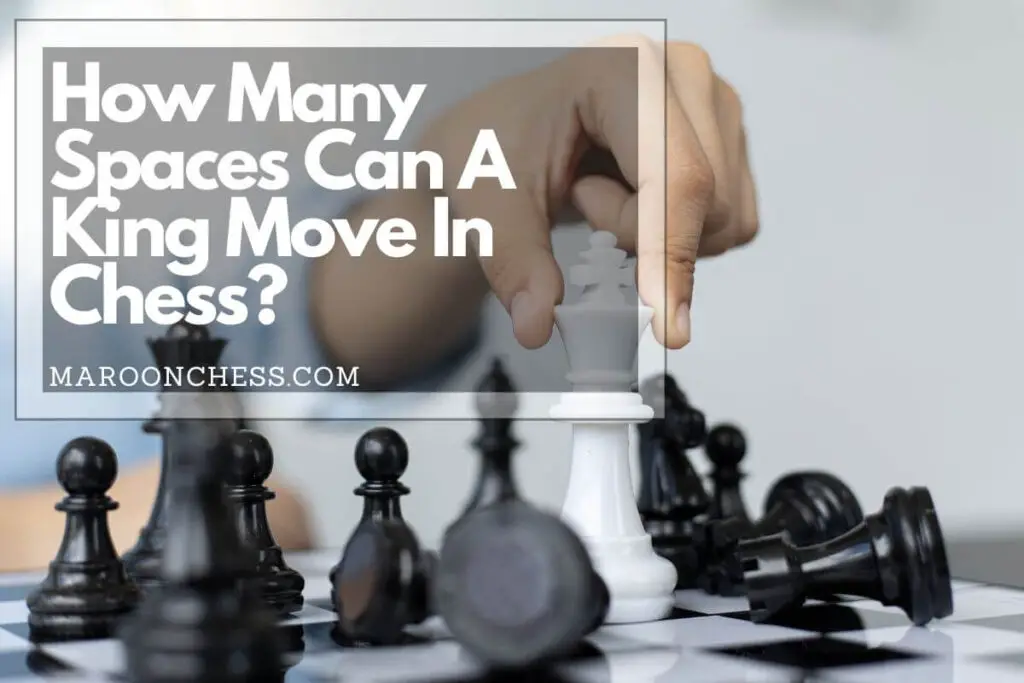The king is the most valuable piece on the chess board. This is because if your king gets checkmated, you lose the game. Learning how the king move is important if you wish to safeguard it and prevent it from being checkmated.
In this article, we will discuss how many spaces the king can move, and when are the best times to move your king. Here is what you should know:
How Many Spaces Can A King Move?
The king can only move one space in any direction, provided that it is a legal move. In other words, the king can move one square forward, backward, sideways or diagonally to any of its neighboring squares.
The king can move one space in any direction as shown by the arrows
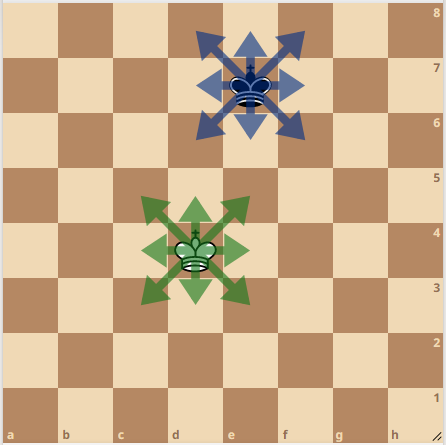
The king has 8 possible spaces it can move to from the center of the board as indicated by the arrows. However, if it is placed on any of the 4 edges of the board, the number of possible spaces it can move is 5. If it is placed in the extreme corner, it reduces to 3 possible squares.
Number of possible spaces the king can move in the center, on the edge, and in the corner of the board
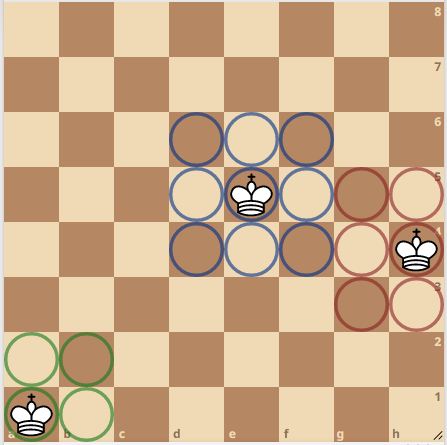
Therefore, as a rule thumb, your pieces should play in the center where they can control a lot more squares. The king however is an exception because you don’t want to bring out the king in the center where it can be attacked. The king is best placed close to the corner of the board away from all the action. This can be achieved by castling the king as early in the opening.
Given that the king can only move one space at a time, it makes it more difficult to escape threats from the opposing side. This makes the king vulnerable, which is why you should prioritize its safety when given the chance.
The king would love to be able to move from one end of the board to the other, but that would make the game go on for a very long time as it would be difficult for the opponent to checkmate the king. Imagine if the king possessed the same power like a queen? The game probably would go on forever.
It now makes sense why the creators of the game chose to give the king only a limited amount of power, unlike the queen which can move any number of spaces in any direction.
The King Move 2 Spaces When Castling: Exception To The Rule
The king can move one space at a time, but 2 spaces to the left or right when castling. Castling is a special move in chess that only happens once in the game, with the goal of protecting the king. It involves moving your king 2 spaces to the rook, after which the rook jumps over and land next to the king. Castling is the only time when you can move 2 pieces in one move.
The king move 2 spaces when castling

After castling
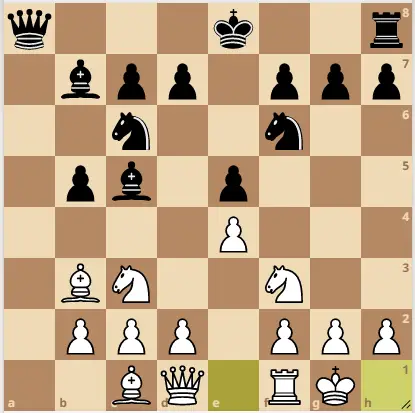
For the king to move two spaces when castling, certain conditions must be met:
- The path to which the king castles must not be controlled by any of the opponent’s pieces.
- There must be no pieces between the king and rook you want to castle with.
- Neither the king nor the rook has moved in the game.
- The king cannot move 2 spaces to castle if it is in check. Read more here
When To Move The King?
In many cases, you should avoid moving your king until you have arrived at the endgame. In the opening and middlegame, there is a lot of action on the chessboard which threatens the safety of the king. At this stage of the game, the king should be locked away in its castling position, untouched if possible.
Therefore, the only time you should consider moving your king is when castling in the opening. Moving your king one space will cause you to lose castling rights, thereby putting your king in danger.
Once you’ve arrived in the endgame, most of the pieces would be traded off, so king safety is not really a priority unlike in the opening or middlegame.
One of the main objective of the endgame is to get your king as active as possible. You can do this by marching the king over to the center of the board so that it can control more squares. Remember, a king in the center of the board controls a maximum of 8 spaces, thereby making it more powerful.
In the center, the king can shoulder off the opposing king, and take control of key squares in the position.
When Can’t The King Move?
The king cannot move to any space on the chessboard under certain conditions:
- The king cannot move to a square that is occupied by its own piece.
- The king cannot move, or capture on a square that is controlled by an enemey piece.
- The king cannot move if the game is stalemate.
Stalemate
Stalemate occurs when it is your turn to move, but there are no legal moves to make on the chessboard. The king has no spaces to move and none of your pieces cannot make progress.
In these types of positions, the squares around the king are either controlled by your opponent’s pieces, or they are occupied by your own pieces.
In the following position, the white king has no legal spaces to move. His pawns cannot advance and the 2 knights cannot move due to the pin.
White to move: The king has no space to move. Game ends in stalemate
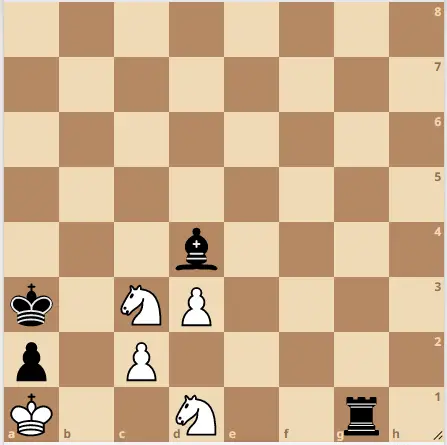
Final Verdict
The king can move one space at a time in any direction, or 2 spaces to the left or right when castling. You shouldn’t simply move your king at any time in the chess game. Follow the principle by castling early in the opening so that the king can stay safe.
The best time to move your king is in the endgame. The king should quickly march towards the center of the board so that it can take control of key squares in the position. From there, the king can help the pawns up the board to promote safely, or shoulder off the opposing king from gaining access to key squares.

